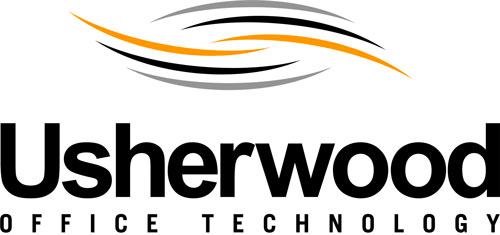When generative AI tools like ChatGPT and DALL-E entered the mainstream a few years ago, a lot of the early focus was on the ways people could use them as creativity toys, writing a story in the voice of a famous author, say, or generating wild images based on just a few prompts. However, the real long-term potential of these tools is to enhance productivity in the business world. With low startup costs and the fundamental aim of reaching people who aren’t tech-savvy, more business owners, even ones who are generally not early adopters of technology, are starting to explore the potential of AI. A study conducted by business intelligence firm Morning Consult showed that 69% of small businesses in the U.S. experimented with AI last year, and of that group, a whopping 76% credited AI with helping their businesses grow.
If you’re considering using artificial intelligence to assist with your dealership’s workflow, here are some things to consider.
DO Use a Reputable Vendor
Artificial Intelligence is the darling of the startup world, but that doesn’t mean it’s a good idea to sign on with any random app. Look for products designed by solid, well-funded companies that will stick around for the long term. The last thing you want is to make a piece of software a cornerstone of your business processes only to have the company that engineers it fold and cut off updates and technical support. ChatGPT by OpenAI is a leader in the field. Still, there are AI products developed by well-established enterprise software companies like Microsoft, which integrates its CoPilot generative AI tool into many Microsoft Office products, and Quickbooks, whose Intuit Assist app automates things like invoice reminders and expense reports. Take stock of the enterprise software tools your company already uses and explore whether your suppliers can offer an AI upgrade that’s painless and won’t require your team to figure out how to integrate unfamiliar software into your workflows.
DON’T Think AI is Magic
Artificial Intelligence is machine learning, meaning it’s good at doing things human brains aren’t, such as analyzing large amounts of data. AI apps can find patterns in datasets and highlight opportunities for optimization, and they can output writing or images based on synthesizing large libraries of samples. AI is not built for or capable of reasoning like a person and should never be used as a replacement for human judgment. Even though search engines like Google now offer AI integration under the search bar, purportedly summarizing the results, remember that this tech is still in its infancy. Generative AI tends to “hallucinate,” making up results that may look and feel authentic but are complete fabrications. Remember that artificial intelligence looks at patterns, not meaning, and always fact check any AI-assisted research results.
DO Budget Realistically for Usage
AI software companies are generally subscription based and scale their rates based on the level of access to their servers. While most apps offer basic free access to try things out, it’s usually only good for a few queries a month. Actual business processes may quickly run up large bills if the rate for large batches of queries is high, so consult with an IT professional with AI experience to understand the level of service you’d need and how much to budget. Like most enterprise software, your options often will be per-seat or for a set number of monthly queries, so consider whether your entire team really needs the tools or just a few key personnel. Focus on one or two tasks you’d like AI to assist with rather than incorporating it into every part of your workflow right away.
DON’T Publish AI-generated Work Without Human Review
The news and social media are full of examples of comical AI mishaps, from ads featuring people with too many fingers and garbled onscreen text behind images, to written copy that sounds suspiciously similar to popular fiction the app might have analyzed in its source library. Don’t think of your generative AI tool as the author. It’s an assistant, enhancing the work of real people. AI can be great for assisting in brainstorming, outlining, and providing a rough draft that your workers build upon, but human eyes should always review and edit any AI output to make sure it makes sense, fits the needs of your company, and doesn’t violate copyright. Cutting corners on public-facing copy by having an app do the work of a human won’t save you any money if it results in bad press. If your clients are in creative industries, be extra sensitive to their wariness about generative AI, and be prepared to answer questions about how your company respects copyright and creative contributors.
DO Sanitize Your Inputs
One of the most useful and productive ways to use generative artificial intelligence is to integrate a chatbot into your website. Make sure it’s armed with the knowledge to field common questions and help customers self-solve troubleshooting issues or knows how to get guidance from your customer service reps who can address issues more quickly. Companies with many products and large knowledge bases can use AI chatbots to help users filter information more easily, while the conversational style AI is ideally suited for making information accessible even to less technical users. However, any public-facing app needs to sanitize its inputs; that is, it needs guardrails in place to prevent malicious or mischievous users from tricking AI into saying things it shouldn’t. If you don’t want your customer service bot to answer questions in inappropriate ways, discuss out-of-scope topics, or accept code injections that could compromise user data, make sure you work closely with a software security specialist to put protections in place. It’s much better to have a chatbot limited to a relatively short list of approved topics and responses than to unleash one with a mind of its own.
DON’T Be Afraid to Experiment
Generative AI is still a relatively new technology, and its capabilities and applications are growing every day. Even if you don’t feel ready for a customer-facing implementation, there are many low-cost, low-impact ways to test how AI can enhance productivity at your company without completely redesigning your workflow. Audit your processes for repetitive, high-volume tasks or instances where human oversight creates inefficiencies that a computer can improve. Consult with your department stakeholders—is there any tedious work they feel takes up too much of their time and gets in the way of more important tasks? Involving your team in the decision process for adopting AI and keeping the focus on the ways it can make their jobs easier will empower people to embrace this new tech and give it a fair shot.
Above all, remember that you understand your company and your clients better than any software vendor can. If you adopt AI, it won’t be because you’re following trends but because you identified a problem that AI too can solve. Photocopiers and word processors were experimental, cutting-edge office technology once too, but the things that make workplaces better tend to stick around.



